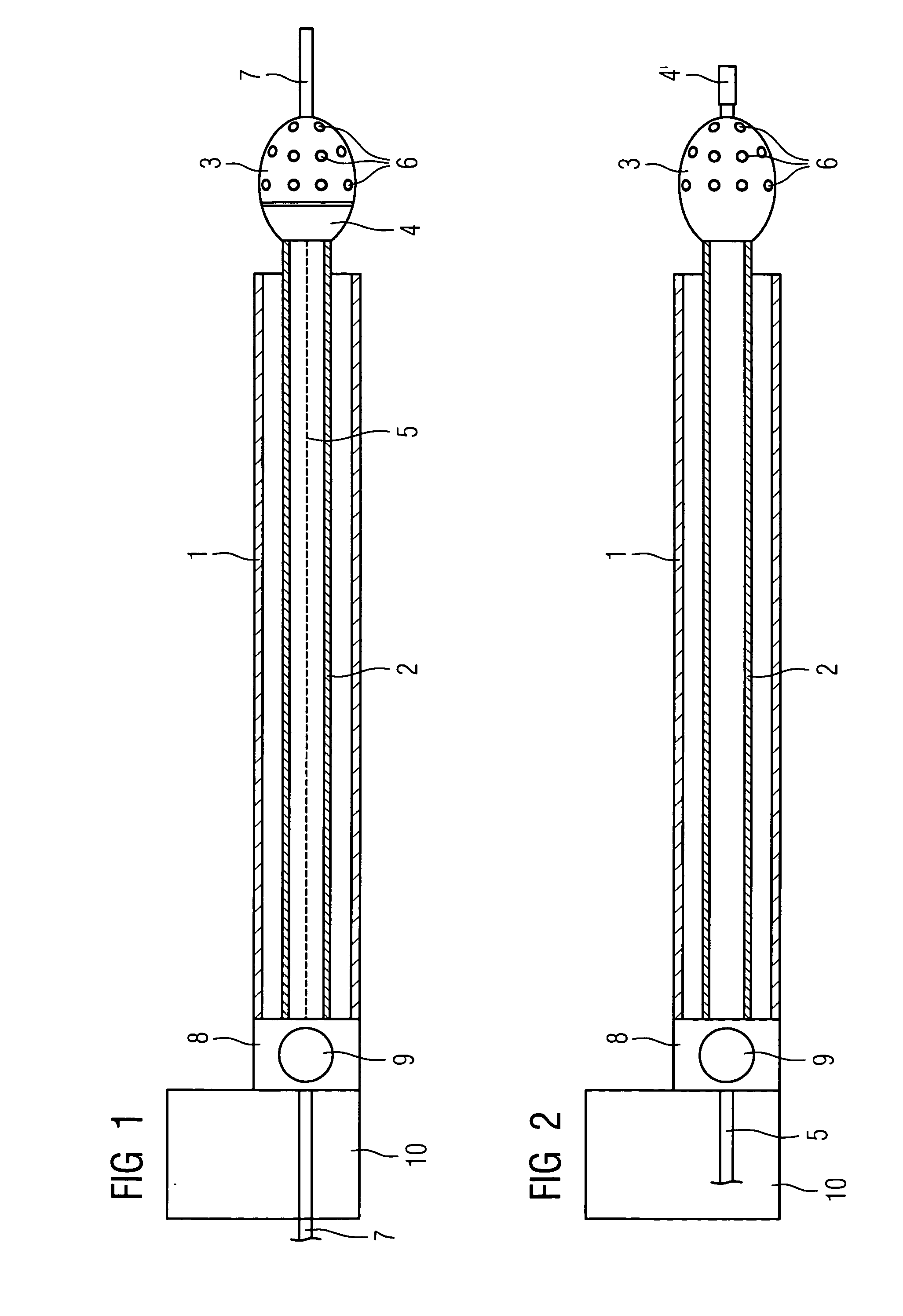Device for applying and monitoring medical rotablation
a technology for applied in the field of executing and monitoring rotaviruses, can solve the problems of significant risk for patients, difficult purely angiographical assessment of the seriousness of calcification, and difficulty in determining the position of calcium in the plaque (surface vs. deep), and achieve the effect of reducing the radiation applied to x-rays
- Summary
- Abstract
- Description
- Claims
- Application Information
AI Technical Summary
Benefits of technology
Problems solved by technology
Method used
Image
Examples
Embodiment Construction
[0023] The combined IVUS rotablation catheter shown in FIG. 1 comprises a catheter sheath 1, in which a hollow flexible drive shaft 2 is arranged which is used both to drive the drill head 3 and also to drive the IVUS sensor 4 arranged in its rear section. 5 indicates a glass fiber line forming the signal line to the IVUS sensor 4. The drill head 3 is equipped in the front section with grinding and cutting particles 6 which are embodied so that, as they rotate, they push aside normal vessel tissue and only remove plaque adhering to the inner wall of the vessel. 7 indicates a guide wire which runs through the catheter but for reasons of clarity the middle of said guide wire is not shown which is initially introduced into the vessel to be treated up to the target area before the combination catheter is introduced. Subsequently the inventive combination IVUS rotablation catheter is pushed onto the guide wire and advanced to the target area. Both the guide wire 7 and also the drill head...
PUM
 Login to View More
Login to View More Abstract
Description
Claims
Application Information
 Login to View More
Login to View More - R&D
- Intellectual Property
- Life Sciences
- Materials
- Tech Scout
- Unparalleled Data Quality
- Higher Quality Content
- 60% Fewer Hallucinations
Browse by: Latest US Patents, China's latest patents, Technical Efficacy Thesaurus, Application Domain, Technology Topic, Popular Technical Reports.
© 2025 PatSnap. All rights reserved.Legal|Privacy policy|Modern Slavery Act Transparency Statement|Sitemap|About US| Contact US: help@patsnap.com


